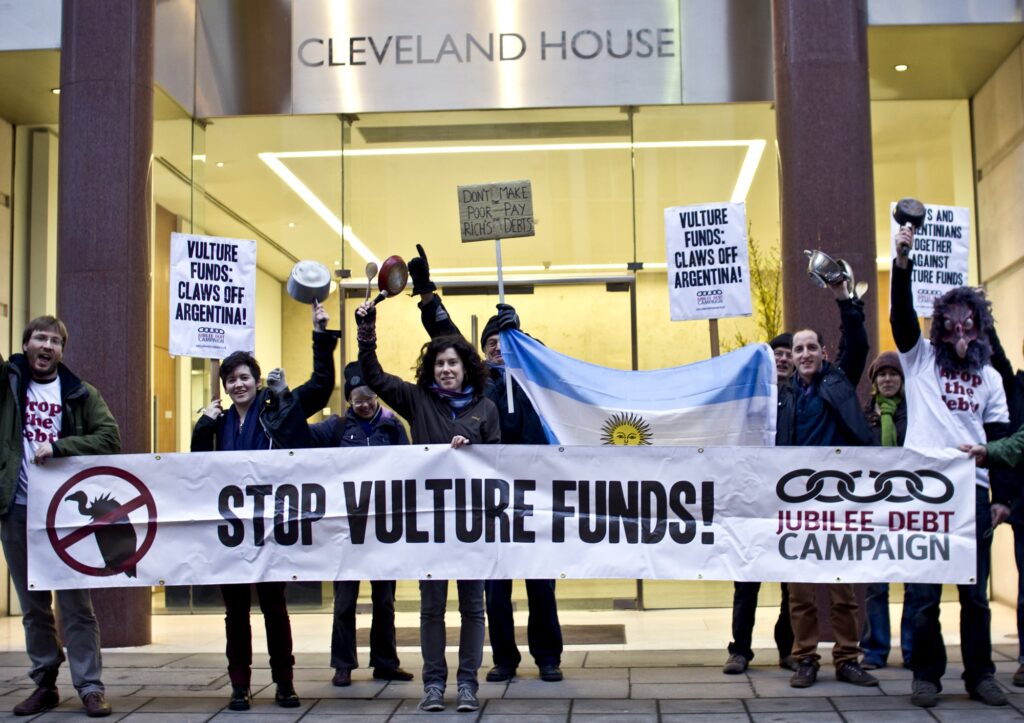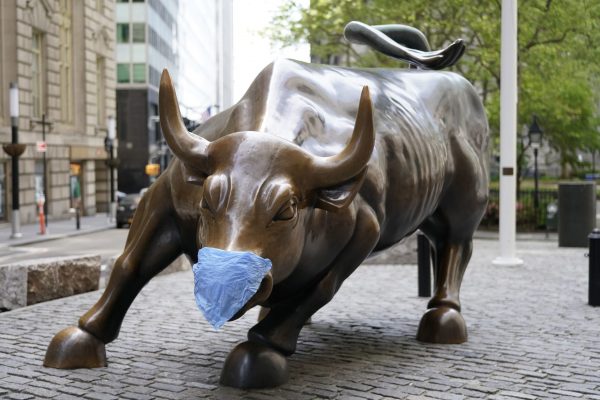It is by now well known that three decades of financial globalization have led to massive increases in income and asset inequalities in the United States and Europe. But in the developing world, the effects of financial globalization have been even worse: along with new inequality and instability, the creation of “emerging markets” to support investment in poor countries has undermined development projects and created a relationship in which poor countries supply financial resources to rich ones. This is exactly the opposite of what was meant to happen. Yet this growing disparity in per capita incomes across the global North and South is not a bug in the system but a result of how global financial markets have been allowed to function.
The biggest promise of neoliberal finance, initially pushed by economists such as Ronald McKinnon from the late 1970s onward, was that it would enable greater and more secure access to resources for development for countries deemed too poor to generate enough savings within their own economies to fund necessary investment. To access savings from abroad, they were encouraged to tap into global financial markets.
At the same time, changes in the economies of the developed world in the late 1980s generated mobile finance willing to slosh around the globe in search of higher returns. Deregulation enabled new financial “instruments,” such as credit default swaps (which supposedly insure against debt default) and other derivatives, that suddenly made it attractive to provide finance to activities and borrowers that were previously excluded. In the United States this gave rise to the phenomenon of “sub-prime” lending in the housing market, but it also encouraged international finance to provide loans to countries without much previous access to private funds. Indeed, many lenders actively sought out new borrowers, as moving capital was one of the major routes to higher profitability in the financial sector.
These developments gave rise to the term “emerging markets,” first used by economists at the World Bank’s private investment arm, the International Finance Corporation (IFC) in 1981 to promote mutual fund investments in developing countries. In the 2000s more developing countries and formerly socialist economies opened themselves to cross-border financial investment. They thereby became the “emerging markets,” described as developing countries in which greater risk of investment would be accompanied by higher expected returns. More recently developing countries previously outside the pale of international investor interest have been brought into the fold of globally integrated capital markets as “frontier markets.”
Global investors engaged with risky markets in developing countries that had never before been seen as attractive destinations (even when they liberalized their rules for foreign finance to enter and exit easily and purchase domestic assets). Beginning in the mid-1980s, policy changes in these markets and the structure of the global financial system meant that these investments involved high returns and relatively low risk. They also generated new forms of profits through commissions and fees imposed on transactions in the developing world.
In developing countries, interest rates and other returns are set higher, ostensibly to account for the higher risk of default, even though cases of default on foreign debt are rare. During the external debt crisis of Latin America in the 1980s, the East Asian crises of the late 1990s, and the other emerging market crises thereafter, private investors who ventured into these markets generally benefited from higher returns and rarely suffered concerns about repayment. Indeed, global financial agents have benefited the most from the spread of neoliberal finance to the developing world, while developing countries and their citizens have mostly suffered. Like water being pumped uphill, emerging market investments have effectively transferred financial resources from the developing to the advanced economies and exacerbated pre-existing asset and income inequalities.
This dynamic applies to developing countries with diverse kinds of economies: the poorest that are forced to rely on external financing, such as sub-Saharan African countries; those that have suffered periodic external debt crises and sought debt relief, such as Argentina; and supposed “success stories” that are widely believed to have benefited from financial liberalization, such as Asian countries. Let us consider some prominent examples.
Who gained from “debt relief” packages in Africa?
Today the standard narrative around debt relief describes it as a handout to low-income developing countries that spend beyond their means. Even when circumstances beyond their control (such as the ongoing COVID-19 pandemic and the associated economic collapse) make debt repayment impossible for such countries, official creditors usually present debt relief as a “gift” to hapless or wayward countries. In reality, debt relief is solely the offer to reduce the overall debt and the payment due on it, with the aim of freeing up the debtor country’s resources for importing crucial goods and to provide more fiscal space, particularly for public investment in physical infrastructure, social infrastructure, and social protection. It is also meant to enable the country to negotiate fresh debt on better terms.
There have been successful debt relief initiatives in the past, such as the 1951 relief provided to Germany by official creditors, which halved the total outstanding debt and limited interest payments to 3 percent of annual exports. In stark contrast, much of today’s debt relief to poor countries involves only a moratorium on repayments or rescheduling (changing the period of required repayment). This only kicks the can down the road, letting debt grow as it rolls. In fact, most studies of debt relief efforts since the 1990s have found that debtor countries did not benefit over time through more sustainable debt burdens. A study including Mozambique, Tanzania, Uganda, and Zambia found that debt relief efforts focus more on rescheduling than they do restructuring. The relatively small reductions in total debt had little impact on total debt stocks. Relief efforts included conditionalities imposed and overseen by the IMF, which required fiscal austerity. This usually involved suppressing public spending, even in critical areas such as health, and greater reliance on regressive taxes such as VAT, rather than income taxes on the rich. The result was worse macroeconomic conditions and reduced quantity and quality of public services.
But more significantly, because most private and other creditors continued to be paid, the programs enabled “free riding” by other creditors. In the 1996 Highly Indebted Poor Countries (HIPC) initiative, several rich governments forgave some of their bilateral official debt—but the benefits accrued to multilateral creditors such as the World Bank, IMF, and Africa Development Bank, which managed to salvage a significant part of their loans. In the post-COVID-19 world, where both bilateral and multilateral creditors are engaged in debt relief efforts, private creditors—most of whom have refused to be part of the process—will benefit most, while governments will be forced to pay up to such creditors or face strict action from international tribunals that notoriously favor creditors.
External debt as a source of resource transfer
The legal codes and regulations that govern global finance favor financial institutions based in the Global North, largely because around 90 percent of international debt contracts are under the jurisdiction of the cities of London and New York. These rules are generally stricter toward international debtors than they are toward domestic ones, with the case law heavily weighted toward private creditors. The sanctions against default by debtor countries have grown so great that most governments do everything possible to avoid default, no matter the cost to their citizens. International creditors know they will be bailed out—regardless of what befalls the economy and people of the debtor country—and will also get the benefit of the higher returns that are extracted from the developing world.
In addition, mobile financial investors who buy securities and hold bonds often don’t care about interest or dividend payments on their international investment. They look for capital gains, which rely on changing asset prices. As a result, some welcome speculative bubbles and boom-and-bust cycles in different emerging markets, especially if they can buy cheap and sell dear. For this reason, despite periodic crises in certain countries, the appetite for financial assets in emerging and frontier markets persists. Moreover, this explains why capital flows across national borders are so volatile for most emerging markets: they seek short-term speculative gains.
This pattern is most starkly evident where emerging market economies experience debt crises—when the inflow of capital stops and the country cannot meet its debt services requirements. Argentina provides a clear example of periodic external debt crises. From the early 1980s, major boom-and-bust cycles and debt crises have devastated the economy for years at a time, largely due to the ways that the international economic architecture and legal framework conspire to keep developing countries from resolving external debt problems.
The Argentine financial crisis of 2001 exploded when the supposedly fixed exchange rate regime (one peso equals one dollar) failed due to growing current account deficits and insufficient capital inflows. A major devaluation of the currency ensued, as well as a default on around $100 billion of external debt. In 2005 the government of Nestor Kirchner, which had managed to relatively revive the economy, offered its creditors debt swaps that significantly restructured the debts. Argentine bonds were trading at a fraction of their face value in the secondary market, reducing the value of the debt by nearly 75 percent. The multinational banks and other creditors holding 93 percent of government bonds participated in these debt swaps in 2005 and 2010.
But a tiny minority of creditors refused to accept the negotiated settlement. These creditors sold their holdings to hedge funds (in this case known as “vulture funds” that take on distressed assets in the hope of recouping a higher value from them). One such fund, part of Elliot Capital Management (run by U.S. billionaire Paul Singer), bought Argentine bonds at around 20 percent of the face value in 2008, and then pursued the case legally in New York where the debt contracts were based. It demanded full payment on its debt (face value of around $1.5 billion) which would give a return of more than 1,600 percent on the initial investment. In 2012 a U.S. District court ruled in favor of the hedge funds, and even stated that any third party—including banks facilitating such transactions—that attempted to pay the other bondholders would be held in contempt of court. The U.S. Supreme Court dismissed the Argentine government’s appeal. The ruling effectively disabled Argentina from repaying debt to other bondholders (who had already received around 90 percent of their dues) unless it also paid the holdouts in full, even though it had promised the other bondholders it would not.
This judgment made a mockery of all debt renegotiation agreements, as it removed the incentive for creditors to accept anything less than full value of the debt. No credit system has ever functioned this way—the possibility of default is embedded into credit contracts through the interest rate, which grows with increasing probability of default. A creditor who has received a higher interest rate based on a high probability of default cannot then demand full repayment as a right, since the contract reflected that very likelihood. Moreover, the judgment also contradicted U.S. bankruptcy laws for municipal and corporate borrowers.
Argentina was effectively made to default, and thereby forced out of international credit markets—though no creditors really suffered. In 2015, soon after taking office with a neoliberal agenda, President Mauricio Macri cut a deal with the recalcitrant holdout creditors, paying what they demanded. Without renewed access to global capital markets, he then went on a borrowing spree (much applauded at the time by global finance) that increased Argentina’s public debt by more than one-third to $321 billion in 2017. Within a few months, the fiscal and current account deficits of more than 5 percent of GDP speedily led to economic and financial crisis; public debt ballooned to nearly 90 percent of GDP; the currency collapsed as capital fled; and inflation soared. In mid-2018 the IMF agreed to provide Argentina with its biggest loan ever, nearly $57 billion. Most went to repaying creditors, or was absorbed in capital flight. In return for this dubious largesse, the IMF demanded the usual budget cuts that reduced employment, gutted public services, and reduced workers’ incomes.
Argentina’s new center-left government has attempted to restructure debts in the midst of the COVID-19 pandemic. Once again, holdout private creditors delayed the process and brought it to knife edge before finally agreeing to debt reduction. Without established procedures for international debt restructuring, legal systems do not give developing countries the minimum conditions of debt workout that are routinely accorded to private and corporate debtors within developed economies.
The experience of “successful” Asian economies
Even those parts of the developing world that are widely considered “success stories” have lost out in global finance. Some emerging markets in Asia are among the most globally integrated in the world, in both trade and capital markets. Most of these economies have experienced significant financial liberalization over the past three decades, enabling greater mobile capital flows across borders and more foreign ownership of domestic financial assets.
But financial liberalization can create crises even in “miracle economies,” as the Asian crisis of 1997–98 showed—after which the affected economies did not recover their pre-crisis dynamism for more than a decade. Governments in the region became so sensitive to the possibility of future crises that they adopted restrictive macroeconomic policies, avoiding fiscal deficits as much as possible by restraining public expenditure and development projects even while reducing income tax rates on companies and the rich.
But, even more startling, the East and Southeast Asian region’s already very high savings rates increased after the financial crisis, even as investment rates plummeted. Countries such as South Korea, Malaysia, and Indonesia became more “open” in policy terms—especially regarding rules about foreign investment—but became net exporters of capital after 1998. The process squeezed savings out of the population and exported them, either through capital outflows or by adding to the external reserves of the central banks, which were typically held in very safe assets abroad (such as U.S. Treasury Bills).
In 2005 this change was wrongly described as a “savings glut” by then U.S. Federal Chairman Ben Bernanke. He argued that Asian countries had “repressed financial systems” that did not provide adequate domestic returns on investment, which is why they exported capital to the more “dynamic” U.S. economy and sub-prime housing boom. In reality it was more like an investment famine. Tight monetary conditions and rising real interest rates reduced access to bank credit for domestic investment. Governments opted to keep budget deficits under control by reducing their spending or imposing taxes such as VAT that fell disproportionately on the poor. However, rules for domestic residents sending their money abroad were progressively relaxed, so as to become more financially integrated with the rest of the world.
Meanwhile, the surge in gross capital inflows to developing Asia continued and, with it, new pressures for financial liberalization. As a result, Asian financial systems became more like those in the United States and the UK, with the growing importance of new institutions (such as private equity and hedge funds) and new instruments (such as derivatives and leveraged buyouts). Recently local bond markets have been opened up to foreign investors. These trends have generated new forms of vulnerability and financial fragility, which (just as in advanced economies) have made it harder to devise rules and regulations without a major revamp of the ownership and regulatory structures in finance.
This strong integration with global capital markets has made emerging markets in Asia susceptible to spill overs from macroeconomic policies in advanced countries. Ultra-loose monetary policies, such as the huge expansion of money supply (through “quantitative easing”) and very low (sometimes even negative) interest rates, meant that some of the easy money generated in advanced economies made its way into emerging markets.
Developing Asia was a major “beneficiary” of this process, receiving significant increases in gross capital inflows. But, though there were large total “gross flows” of capital in both directions, this did not mean that net inflows of capital were significant. On the surface, the developing Asian region became the most “favored” destination for global financial markets. However, because domestic private residents were also increasingly allowed to invest abroad and central banks in the region also sought to expand their holdings of foreign assets, there were also large increases in capital outflows.
For example, according to IMF data, between 2010 and 2018 Malaysia received between $308–430 billion in gross capital inflows annually, while Thailand got between $305–498 billion each year. These seem like enormous inflows of capital. However, Malaysia sent even more flows abroad, becoming a net capital exporter, and Thailand’s net inflows varied between only $11–80 billion, a tiny fraction of what it received in gross terms. Two other countries that received large net inflows were India and Indonesia, but even theirs were substantially lower because of growing outflows.
These flows have been costly, as the returns these countries pay on the capital that flows in are much higher than the returns they get from the capital that flows out. Around half of the outflows (sometimes more) owe to the build-up of foreign exchange reserves by central banks, the “self-protection” strategy described earlier. These are typically held in low-yielding assets and safe securities like U.S. Treasury Bills, which provide low interest rates. There are also differences in returns on other assets, including equities held by private agents, where developing countries lose out. Yilmaz Akyuz has estimated that such transfers to advanced economies reached 2.3 percent of the combined GDP of the eleven emerging economies in the G20 during 2000–2016. UNCTAD has estimated that in 2010–18, such losses came to 5.2 percent of GDP for Thailand and 4.1 percent for Indonesia, significantly more than the net capital inflow.
Meanwhile, it is not clear that holding all these forex reserves actually provides protection. As part of the promotion of neoliberal finance, there has been a recent shift toward greater foreign presence in domestic equity and debt markets, including bond markets. A growing proportion of sovereign bonds in Asia are held by foreigners. Policy makers believe that bonds issued in domestic currency and subject to local jurisdiction will avoid the currency and maturity mismatches that have led to sovereign debt crises in the past. But this is not the case. Foreign residents can still sell bonds quickly in response to global interest rate changes or sudden shocks to the domestic economy, leading to major currency depreciation. In fact, it is no longer sufficient to have enough reserves to cover short-term foreign debt or even total foreign debt if local currency debt can also quickly be sold by foreign residents anxious to exit that market. No level of foreign exchange reserves will stem capital flight or prevent currency instability.
Neoliberal finance and the development project
These examples reveal how financial liberalization, including opening the economy to cross-border capital flows, has increased financial fragility in developing countries and rendered them vulnerable to periodic financial and currency crises. Some outcomes mirror those in advanced economies, such as the greater opacity of financial transactions, “innovations” like swaps and securitisation that disguise risk, and irresponsible behavior and excesses—which are all associated with more financial crises. These wreak havoc on real economies, employment, and basic living conditions, while bailouts sustain the financial institutions responsible for the problem. Just as in advanced economies, this creates income and asset inequality. Neoliberal finance has had worse effects in developing countries, though, because it undermines the very project of development; it has done so in four ways.
First, it has reduced governments’ ability to direct finance toward particular sectors, which was a key element of the industrialization process in all of today’s advanced economies—from England during the industrial revolution, to Germany, the United States, Japan, and, more recently, South Korea and China. Once the financial sector is “liberalized” to allow private banks and other players to do as they wish, the chances of funding long-run, possibly risky but necessary projects (such as investment in transportation, green energy, health, and education) diminish greatly. It is then difficult to promote key interconnected sectors that are important for economic diversification and employment generation. By eliminating the possibility of directed credit, neoliberal finance effectively ties the hands of states in developing countries that want to promote industrialization.
Second, as we saw with the example of the emerging markets in Asian countries, financial liberalization forces governments to try and appease financial interests by reducing tax rates on profits and on the rich, even as trade liberalization reduces import tax revenues. Governments then must keep fiscal deficits under control by cutting their own spending. Thus, governments in emerging markets struggle to spend more in a downturn, in the “countercyclical spending” that is now so evident in the United States and European Union. This means that economic downturns in emerging markets are longer and more severe.
Third, integrating with global capital markets exposes developing countries to boom-and-bust cycles driven by macroeconomic policies and processes in advanced economies. Even without the instabilities created by policies of advanced economies, once an emerging market is “chosen” by financial markets as an attractive destination it often culminates in crisis. A surge of capital inflows causes the exchange rate to appreciate, which makes imports cheaper and exports more expensive. As a result, the incentive for domestic investment in producing traded goods (exports and import substitutes) decreases and investment in non-traded goods, especially in the stock market and real estate, increases. Developing countries that experience significant capital inflows also experience stock market and property and real estate booms. The latter may be interpreted as a sign of prosperity (even when total production and employment are stagnating or even declining), but it simply reflects the private sector’s use of newly available cheaper finance to increase its own debt.
Once this macroeconomic imbalance exists, any factor can trigger an outflow of capital. Capital inflows create the conditions for their own eventual reversal when the current account deficits are suddenly perceived to be too large or unsustainable. Global investors might suddenly realize that the current account deficit has become large, a crisis in a neighbouring country might lower investors’ appetite for risk, political changes might threaten instability, or changes in advanced countries might make them more attractive for mobile finance. The capital outflow then triggers a financial crisis, expressed not just in the balance of payments but in domestic banking and the real economy.
The only way to avoid this pattern is to prevent the capital inflows from impacting the exchange rate by making the central bank buy foreign exchange and store it in the form of reserves. Asian emerging markets have done exactly this; capital inflows are not used to increase potential investment in the economy.
But that gives rise to the fourth problem of financial liberalization: for two decades, the net outflows have gone in the reverse direction. Even emerging markets that received substantial capital inflows did not experience increases in aggregate investment rates but built up their foreign exchange reserves. Many developing regions became net capital exporters to the developed world—particularly to the United States, which at one point before the Global Financial Crisis was absorbing 70 percent of the world’s savings. That they earn less on the capital they send abroad than they pay out on the capital that flows in means that emerging markets transfer investment income to the Global North. Whether a developing country is a net recipient of finance or a net provider, it still suffers from financial integration.
For this reason, emerging markets—now effectively dependent on the whims of global investors—have been hesitant to spend on their own economies and citizens even in the face of the COVID-19 pandemic and the biggest economic crisis of our lifetimes. It is hard to think of a more masochistic economic strategy on the part of governments than complying with the rules of neoliberal finance.








